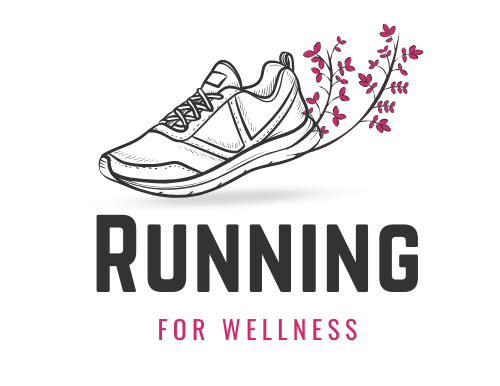Pre-race anxiety is a familiar experience for most runners. Sweaty palms, a pounding heart, and spiraling thoughts can make even seasoned athletes feel uneasy before the starting gun.
Research by RunnersConnect suggests that around 78% of runners deal with these symptoms before a race. Breathing techniques have emerged as one of the most effective tools to manage that tension, backed by science and athlete experience alike.
It goes without saying that these techniques are just a part of the process, which also includes ensuring the flexibility to avoid muscle tightness.
Controlled breathing restores focus, lowers stress, and steadies both body and mind.
Seven techniques, each with proven benefits, help runners enter their race calm, centered, and ready to perform.
Let’s check them out.
| Technique | Purpose | How to Do It |
|---|---|---|
| Diaphragmatic (Belly) Breathing | Calms nerves, improves oxygen flow, and prevents side stitches. | Inhale through the nose, expanding the belly; exhale through the mouth, contracting the abdomen. Continue 1–2 minutes. |
| Box Breathing (4-4-4-4) | Reduces stress, steadies heart rate, and sharpens focus. | Inhale 4s, hold 4s, exhale 4s, hold 4s. Repeat 4–6 times. |
| 4-7-8 Breathing | Promotes relaxation and lowers cortisol. | Inhale 4s, hold 7s, exhale 8s. Repeat up to 4 times. |
| 3:3 Breathing Pattern | Syncs breath with stride for balance and focus. | Inhale over three steps, exhale over three. Adjust to 3:4 if needed. |
| Cadence Breathing | Maintains rhythm and prevents breathlessness. | Inhale for 2–3 steps, exhale for 2–3 steps. Keep body relaxed. |
| Alternate Nostril (Nadi Shodhana) | Balances brain activity and reduces anxiety. | Close right nostril, inhale left; close left, exhale right. Repeat several cycles. |
| Sighing Breath | Releases tension and restores composure. | Inhale deeply through the nose, exhale audibly with a long sigh. Repeat 3–5 times. |
Table of Contents
Toggle1. Diaphragmatic (Belly) Breathing
Diaphragmatic breathing serves as the foundation of controlled respiration for runners who struggle with pre-race nerves.
It is a method that triggers the parasympathetic nervous system, which slows the heart rate, decreases tension, and improves overall control of emotional and physical stress.
It also reduces the likelihood of painful side stitches, a common issue caused by erratic, shallow breathing before or during races.
Effective diaphragmatic breathing creates a stable rhythm that helps maintain posture and balance during running. Engaging the lower lungs allows more oxygen to reach the bloodstream, improving endurance and delaying fatigue.
The more it is practiced, the more natural it feels, transforming anxious energy into calm readiness.
- Activates the relaxation response in the nervous system
- Reduces muscle tightness and pre-race jitters
- Prevents cramping and side stitches
- Enhances oxygen flow and endurance
- Improves focus and emotional control before competition
How to do it:
- Sit or stand with an upright posture.
- Inhale slowly through the nose, allowing the belly to expand outward as air fills the lower lungs.
- Keep the chest and shoulders relaxed, avoiding any upward lift.
- Exhale gently through the mouth, feeling the abdomen contract inward.
- Continue this cycle for one to two minutes, focusing entirely on the movement of the belly.
- Consistency is key. Practicing this breathing pattern regularly during training sessions ensures it becomes second nature under pressure.
When to use it:
- During warm-ups to establish a calm, steady rhythm before the race
- 10 to 15 minutes before starting, while stretching or visualizing the course
- Any time anxiety begins to spike or the heart rate feels irregular
2. Box Breathing (4-4-4-4 Pattern)
Box breathing is a powerful method designed to quiet the mind, sharpen focus, and reset the body’s stress response. Frequently used by soldiers, elite athletes, and professional performers, it teaches control under pressure.
Equal phases of inhaling, holding, exhaling, and pausing create a rhythmic flow that stabilizes the nervous system and promotes mental clarity. For runners, it’s an ideal way to stay composed when surrounded by pre-race chaos.
Controlling the breath with precision interrupts racing thoughts and physiological stress signals. Each cycle promotes mindfulness, allowing the runner to stay grounded rather than overwhelmed by anticipation.
It can also reduce the production of stress hormones like cortisol, preventing early fatigue.
- Lowers heart rate and blood pressure before a race
- Enhances concentration by focusing attention on the rhythm
- Reduces muscle tightness caused by stress
- Improves oxygen balance in the bloodstream
- Encourages composure and calm decision-making
How to do it:
- Sit or stand upright with shoulders relaxed.
- Inhale slowly through the nose for 4 seconds.
- Hold the breath for 4 seconds.
- Exhale through the mouth for 4 seconds.
- Pause for another 4 seconds before beginning the next inhale.
- Repeat for 4 to 6 full cycles.
When to use it:
- While waiting in the start corral surrounded by other runners
- During moments of restlessness or overthinking in warm-ups
- Just before stepping onto the starting line to regain focus
A metronome app or quiet counting in the mind can help maintain consistency. Gradual practice builds endurance and familiarity, allowing the pattern to feel natural when anxiety arises.
3. 4-7-8 Breathing

4-7-8 breathing is designed to bring the body into a relaxed state quickly. The elongated exhalation phase helps remove carbon dioxide more efficiently while slowing brain activity associated with tension.
Developed as a method for instant calm, it mimics the body’s natural rhythm during rest, creating a soothing and almost hypnotic sensation.
Runners often turn to this technique to quiet pre-race jitters that can disrupt focus. By extending the exhalation, the body sends signals of safety to the nervous system, countering adrenaline surges.
Regular use can improve sleep quality, lower blood pressure, and enhance concentration during stressful events.
- Promotes fast relaxation before intense physical effort
- Lowers cortisol and stabilizes mood
- Improves control over breathing rate and rhythm
- Trains the body to respond calmly to nervous tension
- Enhances oxygen-carbon dioxide balance
How to do it:
- Inhale quietly through the nose for 4 seconds.
- Hold the breath gently for 7 seconds.
- Exhale completely through the mouth for 8 seconds with a soft whooshing sound.
- Repeat up to four cycles for best results.
When to use it:
- While preparing at home or traveling to the race venue
- During early morning nerves before a big event
- As part of mental preparation in the days leading up to competition
Avoid straining during the long exhale; the goal is smoothness, not force. The first few sessions might feel slightly uncomfortable, but practice strengthens lung control and comfort.
4. 3:3 Breathing Pattern
@pocketbreathcoachPranayama for Beginners | 3-3-3-3 Rhythm to Relax and Refocus Calm your mind, ease stress, and drift off to sleep with the Pocket Breath Coach app. Custom breathing patterns, relaxing visuals, and offline use — so you can practice anywhere, anytime: 👉 https://PocketBreathCoach.com This guided pranayama practice follows a simple rhythm: inhale for 3 seconds, hold for 3 seconds, exhale for 3 seconds, hold for 3 seconds. It’s a gentle, beginner-friendly technique to help calm the nervous system, reduce stress, and improve focus. You can practice sitting comfortably, lying down, or even during a short break at work. How to Practice 3-3-3-3 Pranayama – Sit or lie down comfortably in a quiet place. – Inhale slowly through your nose for 3 seconds. – Hold your breath for 3 seconds. – Exhale gently through your nose or mouth for 3 seconds. – Hold again for 3 seconds before starting the next round. – Repeat for 5–10 rounds or until you feel calmer.♬ original sound – Pocket Breath Coach
3:3 breathing connects breath and movement to create balance and endurance. By coordinating inhalation and exhalation with foot strikes, runners maintain rhythm and avoid irregular breathing that leads to fatigue or discomfort.
It promotes a steady oxygen supply, supporting muscle performance and mental focus during physical exertion.
Each stride synchronized with breath helps shift attention away from nerves and into body awareness. This focus on rhythm provides stability, allowing smoother transitions between warm-up and race pace.
- Builds consistent breathing rhythm to reduce tension
- Improves oxygen efficiency during early race stages
- Creates focus and mindfulness in motion
- Decreases side stitches and breath irregularities
- Supports posture and pacing
How to do it:
- Start with a gentle jog.
- Inhale through the nose over three steps.
- Exhale through the mouth over the next three steps.
- Keep shoulders relaxed and breathing smooth.
- Adjust pattern to 3:4 if more comfort is needed during longer runs.
When to use it:
- During warm-up runs before lining up for the race
- In the first few minutes of the event to regulate energy expenditure
- When anxiety starts to interfere with pacing or form
5. Cadence Breathing

Cadence breathing focuses on syncing each breath with stride cadence, helping runners maintain balance and flow. By connecting respiration to footfalls, it turns chaotic pre-race energy into a calm, rhythmic motion.
The cadence breathing method prevents breathlessness, improves oxygen delivery, and keeps attention anchored on performance instead of nerves.
Professional runners often rely on cadence breathing to manage adrenaline and sustain focus during long distances.
Breathing in a set pattern, such as 2:2 or 3:2, ensures oxygen intake matches physical output. The key is evenness, not speed.
Once rhythm becomes stable, muscles stay relaxed and the mind sharpens, reducing wasted energy caused by overbreathing or tension.
- Promotes consistent breathing rhythm during motion
- Prevents hyperventilation and erratic breathing under pressure
- Improves focus and stride efficiency
- Increases endurance by optimizing oxygen use
- Encourages mindfulness during the first race mile
How to do it:
- Begin by identifying natural running cadence.
- Inhale through the nose for two or three steps.
- Exhale through the mouth for the same number of steps.
- Adjust rhythm according to pace. Faster speeds often require shorter cycles, such as 2:2, while moderate runs feel better with 3:2.
- Maintain a relaxed upper body, avoiding tension in the shoulders and jaw.
When to use it:
- During pre-race jogs to synchronize breath and body before the start
- In the early miles to prevent panic breathing and stay relaxed
- When regaining rhythm after a surge or hill climb
6. Alternate Nostril Breathing (Nadi Shodhana)

Alternate nostril breathing, known as Nadi Shodhana in yoga, is a centuries-old method used to balance mental and physical energy.
It is particularly effective for runners who experience mental fatigue or overexcitement before a race.
Alternating nostrils while breathing helps synchronize the brain’s hemispheres, creating harmony between analytical and emotional states. The process naturally slows heart rate and relaxes the nervous system.
Runners often use this technique during quiet moments before warm-up or while sitting in the car before the race. The rhythmic nature of the practice instills peace and balance, providing mental clarity that lasts well into the event.
- Balances left and right brain hemispheres for better concentration
- Reduces anxiety and heart rate before competition
- Encourages steady and calm breathing rhythm
- Enhances oxygen exchange in the lungs
- Supports emotional balance and mental focus
- Sit upright in a comfortable position with shoulders relaxed.
- Use the right thumb to close the right nostril and inhale slowly through the left.
- Close the left nostril using the ring finger and exhale gently through the right.
- Inhale through the right nostril, then close it and exhale through the left.
- Continue this cycle for several minutes, keeping breaths smooth and steady.
When to use it:
- While sitting in a quiet space before warm-up or during mental preparation
- In moments of high stress, such as waiting for the race to start
- As part of a regular pre-race mindfulness or yoga practice
7. Sighing Breath (Audible Exhale)

Sighing breath provides instant relief when tension peaks right before a race. The vocal sigh acts as a release valve, clearing built-up pressure that often causes stiffness or rapid heart rate.
Audible exhalation also helps reset breathing rhythm when nerves disrupt control. Each sigh creates a feedback loop between body and mind, reinforcing the sense of calm readiness.
Many runners perform it moments before stepping into the corral, using the sound as both a physical and mental reset.
- Instantly reduces tension and restlessness
- Resets nervous system by signaling relaxation
- Releases tightness in shoulders, chest, and jaw
- Improves oxygen flow for immediate freshness
- Promotes confidence and composure right before the race
How to do it:
- Stand or sit upright with relaxed posture.
- Inhale deeply through the nose, filling the lungs to comfortable capacity.
- Exhale audibly through the mouth with a long, natural sigh.
- Allow the body to soften with each exhale, releasing any lingering stress.
- Repeat three to five times, focusing on the sensation of letting go.
When to use it:
- Just before entering the start corral to release last-minute stress
- After stretching or dynamic warm-ups to reset energy levels
- During moments of crowd-induced anxiety or mental clutter
Summary
Anxiety before a race is entirely normal, even among elite athletes.
Breathing techniques serve as a simple yet powerful way to take control and steady emotions before competition. Incorporating these exercises into training builds mental resilience and physical stability, making race day smoother and more focused.
Calming breath means calming mind, every inhale and exhale is a step toward peak performance.
Related Posts:
- 10 Best Running Documentaries - Inspiring Films for Runners
- How Can You Start a Career as a Running Coach?
- How Far Is a Half Marathon? Everything You Need to Know
- Lower Back Pain While Running? Here's What You Need to Know
- Should You Run on an Empty Stomach? Pros and Cons Explained
- How Long Does It Take to Train for a Half Marathon?







